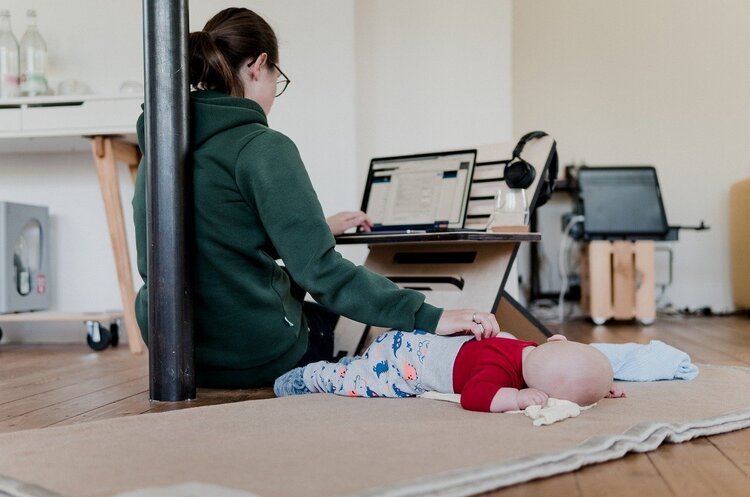Distance does not mean detachment: how to launch a virtual office
And establish remote work in a large company

The pandemic and quarantine have changed the way people work. Companies must come to terms with the fact that now there will always be a certain number of employees working outside the corporate environment.
As we have already written, this trend has significantly affected the commercial real estate market. In addition, changes in algorithms of interaction between employees have affected the high-tech segment, creating a demand for the emergence and spread of such a format of work as "virtual office" (VDI, Virtual Desktop Infrastructure). Exclusively for Mind, Kyrylo Honcharuk, СIO of PJSC Ukrtelecom, explained what the "virtual office" is, how to launch it in a large organization and how to train employees on the example of Ukrtelecom.
Most Ukrainian company directors who I communicate with are determined to reduce their use of office space. Sometimes, even by 3 or 4 times – no more than 20-30% of their staff will work directly in the office at the same time.
Given the consequent high employee turnover in the office (different employees coming in on different days), they will no longer be assigned a specific workplace. Previously, this was more the exception than the rule – a practice of some larger companies like Ernst & Young or Telenor. Now, employees not having a fixed workspace is already becoming mainstream.
The employee comes in with a laptop, or a tablet, or with any "thin client" (any device that allows you to enter a virtual workplace: a computer, laptop, netbook, tablet, phone, workstation), logs in and gets access to the corporate environment.
Where to begin?
One of the main issues is providing employees with remote access to the workplace from any location. In Ukrtelecom, the remote access issue was managed through various technical solutions. Users can work with their equipment and get secure access, they can connect with corporate IT equipment via a VPN.
Now we have gone further and launched virtual workplaces. We used a special application: Azure WVD, which can be downloaded from the App Store or on Google Play. It is easy to set up and get access to an online corporate environment with all the right services and data.
It sounds simple enough, but the app is just an interface for displaying a picture. The IT department has done quite a lot of difficult work to organize the online corporate environment, to create infrastructure and integrate it with other corporate services, so that everything works for the user without any problems. At the same time, the need for information security has increased – information is not stored on the end-user’s device, everything is stored directly on the cloud.
How long will it take?
The project was launched and tested in the summer. We took 5-10 people each from different departments: from finance, IT, admin, and HR. A total of about 100 people were in the test group. We organized two pools of workplaces: for high-performance workstations, where users need to make use of some kind of complex computations or software operations, and a standard workplace that suits a typical employee. Now we are at the scaling stage, connecting 100 new users per week via fiber-optic internet.
This year we plan to connect up to one and a half thousand people. By the end of the project, half of the staff will receive virtual workplaces. Perhaps we will even connect all employees, but, according to our calculations, 40-50% of the staff will work in this teleworking mode all the time. For the rest, for example, for the company management, telework can become just a way of working in an emergency or on off hours.
What can you get as a result?
The implemented project has paid off. The only problem was the conservatism of the users, who had gotten used to their old interfaces and did not always take to the innovations straight away. Some even asked to “put everything back". But this is a standard issue whenever technological changes are made, and we learned how to deal with it: we make instructions in pictures, with video tutorials, to help users with their settings.
With the launch of telework for employees, we are already seeing three positives. First, it's convenient. A virtual workplace allows staff to work not only remotely from anywhere, but also for us to make more efficient use of our office space. Secondly, it is safe. In our controlled environment, we understand how this system works and can fully control everything that happens in it.
Accordingly, we can provide secure access to IT infrastructure and avoid uncontrolled data leakage. Finally, it is economical. Teleworking solves the problem of modernizing outdated technology. Old computers, on which modern software can no longer work normally, simply move into the category of "thin clients". Just installing a device for accessing a corporate cloud is much cheaper than upgrading a computer on the other side of the country.
Now we are testing telework inside Ukrtelecom, but due to the emerging demand, I believe that this direction may develop into a separate service for business.
The OpenMind authors, as a rule, are invited experts and contributors who prepare the material on request of our editors. Yet, their point of view may not coincide with that of the Mind editorial team.
However, the team is responsible for the accuracy and relevance of the opinion expressed, specifically, for fact-checking the statements and initial verification of the author.
Mind also thoroughly selects the topics and columns that can be published in the OpenMind section and processes them in line with the editorial standards.



